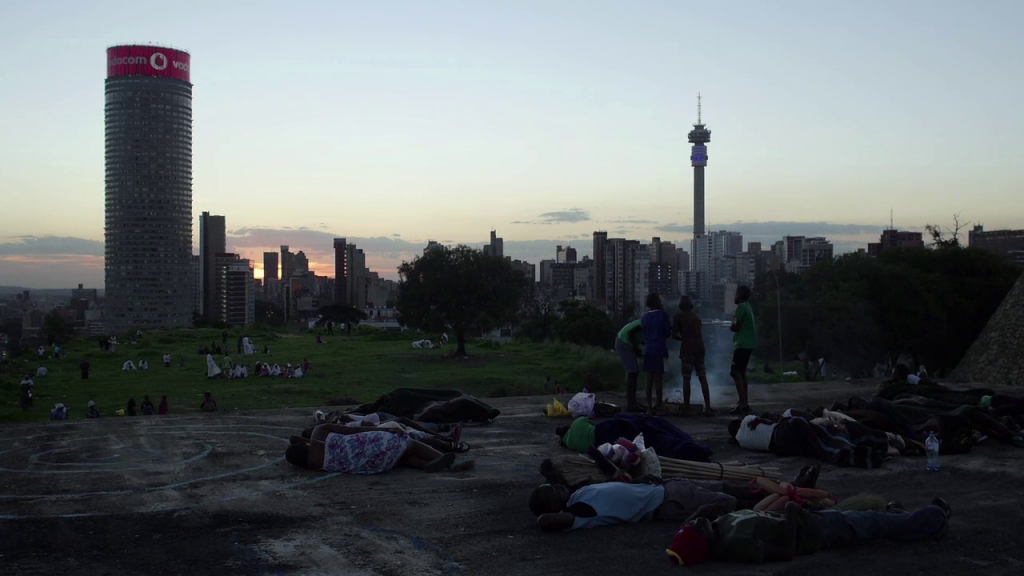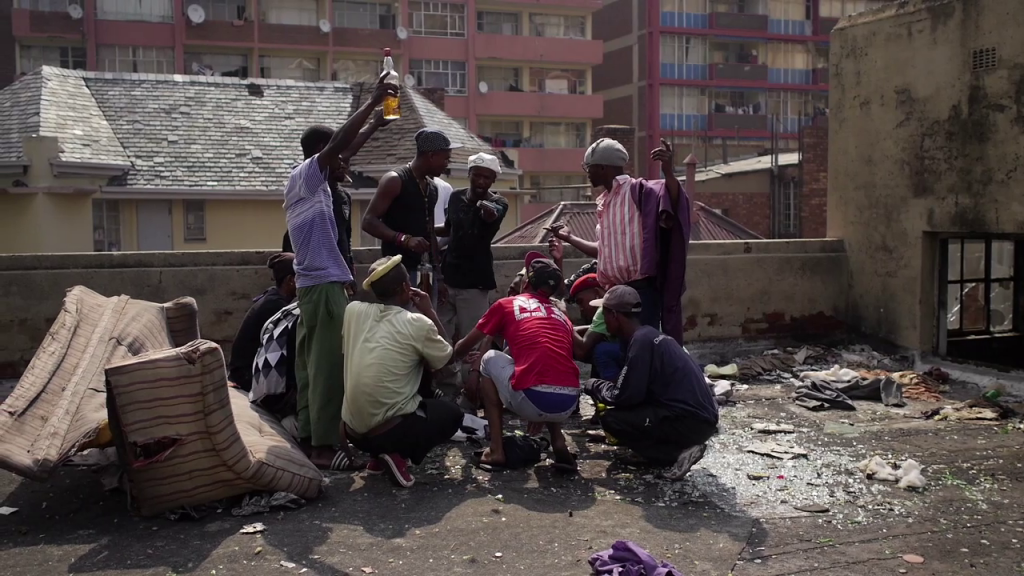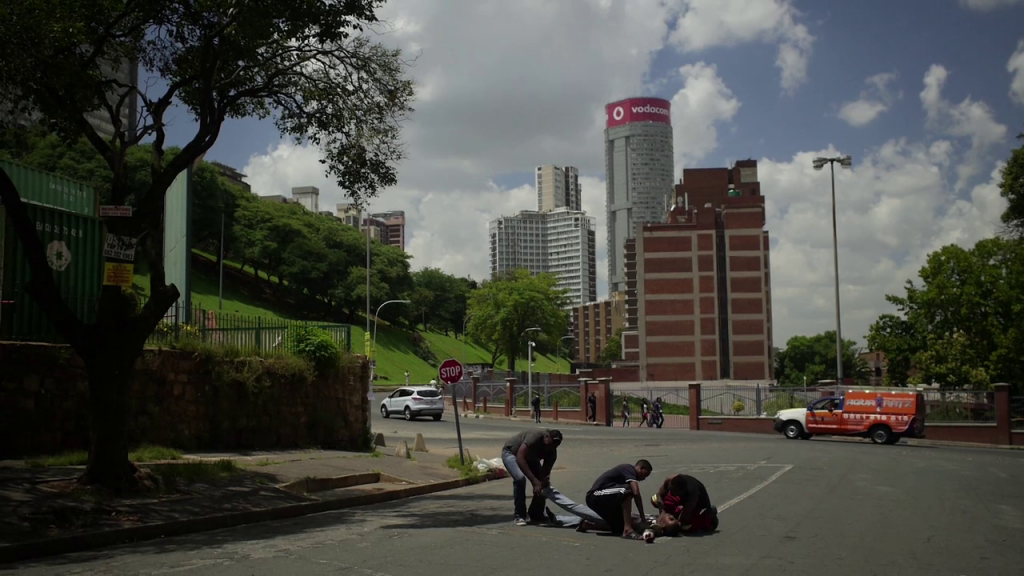HILLBROW
HILLBROW
Un homme au sommet d’un immeuble, menacé, au bord du vide qui s’ouvre derrière lui, surplombant la ville. Puis un autre, parcourant la ville à pied, dont la marche sera interrompue par une agression, supposée fatale, puis… Les situations s’enchaînent, pour déplier une traversée de Hillbrow, quartier de Johannesburg autrefois en vogue et devenu une zone surpeuplée et violente.
On retrouve la prédilection de Nicolas Boone pour les environnements urbains en marge et souvent chargés de stéréotypes, qu’il s’emploie à détourner, comme déjà avec son précédent film cosigné avec Olivier Bosson 200% (FID 2011). Ici la traversée sera guidée par des personnages fictifs incarnés par des habitants du quartier.
Dix saynètes inspirées de récits collectés sur place, inscrites dans la ville offrant autant de parcours filmés en plan séquence, dont l’ultime, saisissant. Peu de paroles dans un film où le langage du corps et des actions s’incarne dans les espaces : supermarché, rue, parking, terrains vagues. Avec la figure omniprésente de la marche, toute de lenteur ou dans l’urgence, mais toujours comme une inscription dans un paysage. Et en arrière-plan de la violence comme rupture, explicite ou sous-jacente, son contrepoint, l’idée d’une communauté qui ferait corps. (Nicolas Feodoroff FID 2014)
________________________________________________
A man is on top of a building, under threat, at the edge of the void that opens behind him, giving on to the city. Then there is another man, crossing the city on foot, whose walk is interrupted by an attack, presumed to be fatal and then… A succession of situations shows a voyage through Hillbrow, a once-fashionable Johannesburg district that has become a densely populated, violent area. Here we revisit Nicolas Boone’s predilection for neglected urban environments that are often loaded with stereotypes which he seeks to undermine, as was the case with his previous film, 200% (FID 2011), co-directed with Olivier Bosson. Here the journey is guided by fictional characters played by local residents. Ten scenes inspired by stories collected in situ, inscribed in the city and presenting journeys filmed in long takes, the final one of which is very gripping. There is little dialogue in this film in which body language and actions are embodied in spaces: a supermarket, the street, a car park and wasteland. There is the omnipresent aspect of walking, whether slowly or urgently, but always as an inscription in a landscape. And as a backdrop to the violence as a rupture, be it explicit or underlying, is its counterpoint: the idea of a community that could form a body. (Nicolas Feodoroff FID 2014)


